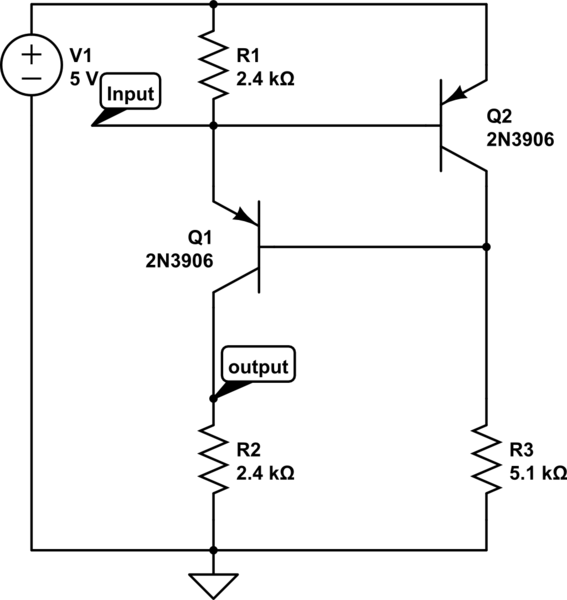 When biasing the common base as shown I was expecting the input impedance to be (1/gm1 + R3/Beta)//(R1//Rpi2). So we with Beta of 100, and biasing current of 250 uA I was expecting the impedance to be around 100+50 (ignoring R1 and Rpi2). But when I simulate the circuit it is coming up to be < 2 Ohms. Could someone please help me understand why?
When biasing the common base as shown I was expecting the input impedance to be (1/gm1 + R3/Beta)//(R1//Rpi2). So we with Beta of 100, and biasing current of 250 uA I was expecting the impedance to be around 100+50 (ignoring R1 and Rpi2). But when I simulate the circuit it is coming up to be < 2 Ohms. Could someone please help me understand why?
I

simulate this circuit – Schematic created using CircuitLab

